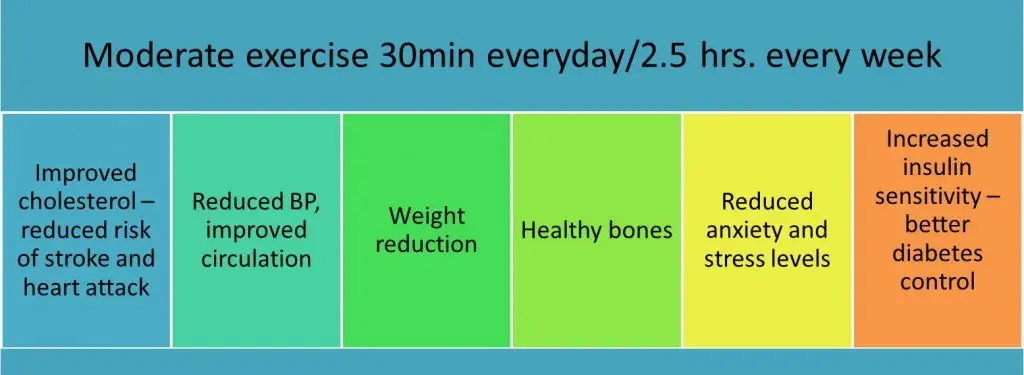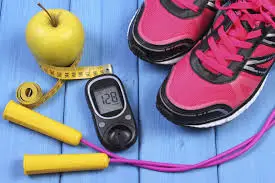About the author: Dr Shilpi Kulshreshtha
Being physically active is good for all of us but is especially important for people with diabetes. People who exercise have higher rates of metabolism and consequently better weight control. They also sleep better, have more energy, are less stressed, are happier and more confident. If you have any concerns at all about becoming more active, please ask for advice from your Diabetologist.
Why is exercise important to you?
Those with diabetes who don’t exercise are three times more likely to have poor diabetes control and more likely to suffer related complications. Exercising regularly improves sensitivity to the body’s own insulin and the body becomes better at using glucose. Exercise also reduces the level of fat in the body, particularly round about the tummy area. It is thought that it is this mobilisation of the body’s fat stores, by exercising, that might improve blood glucose control.
In addition, exercise will:
- reduce the risk of stroke and heart attack
- help blood pressure and circulation
- improve your cholesterol levels
- strengthen your bones and improve weight control
HOW MUCH EXERCISE?
- To get health benefits, the recommended minimum amount of exercise at a moderate intensity for adults is 30 minutes on at least five days of the week (that’s only 2.5 hours out of a 168 hour week)
- However the same health benefits can be gained by breaking this down into 10 minute bouts of moderate activity.
- We are all recommended to achieve at least 10,000 steps a day. Steps may also be counted by a device called as “pedometer”.
What is moderate activity?
Moderate activity feels somewhat hard. Your physical activity level is moderate if you
- are breathing quickly, yet you’re not out of breath
- are lightly sweating after about 10 minutes of activity
- can hold some brief conversation, yet you can’t sing
Improve your physical activity
You can include more walking in your lifestyle – leave the car/bike/scooter at home for small trips, using stairs instead of escalators/lifts, etc. Try dancing, swimming, golf, cycling, bowling or gardening or enjoy some fun with the children and join in with their activities-the list is endless. Even those essential jobs around the house will help. It all counts.
Before you start…
Diabetes does not mean that you can’t become more active. However, it does mean that there are a few things to think about before you start- like your blood glucose levels monitoring, your diabetes treatment, and the possibility of having a “hypo” (hypoglycemia). Before you start any new activity talk to your Diabetologist, especially if you:
- are taking any medications for diabetes or heart disease
- have any complications of diabetes like foot or eye problems
- are not sure which activities suit you
- have any conditions that may restrict your mobility or ability to be active, eg high blood pressure, angina, osteoporosis, asthma or have had a heart attack.
Top tips to get started
- Check with your Diabetologist that your diabetes is presently stable enough to allow you to begin an exercise routine.
- Build up gradually. If you have been inactive for a number of years your body may take time to adjust as your heart and muscles tone up. Start with 5-10 minutes of activity per day for the first week, and then add on 5 minutes per day until the target goal of 150 minutes (2 1/2 hrs) of moderate activity is reached.
- Set yourself daily, weekly and monthly goals or targets.
- Try keeping a physical activity diary to monitor your progress and reward yourself for achieving your goals.
- Choose something you enjoy, as you are more likely to stick with it.
- Don’t give up. Although your body benefits as soon as you become more active you may not see visible changes straight away. After a few weeks the benefits will become more noticeable to you.
- Find an exercise partner – this could be a family member, children or grandchildren, or a work colleague and make it fun.
- Don’t forget 5-10 minutes of warm-up and cool-down exercises before and after the main exercise activity.
- Ensure that your footwear is comfortable.
Useful links

